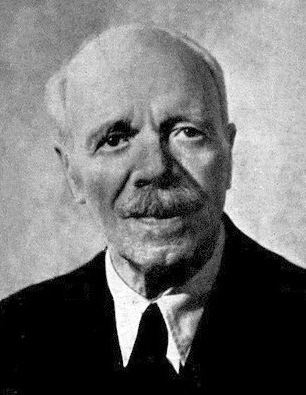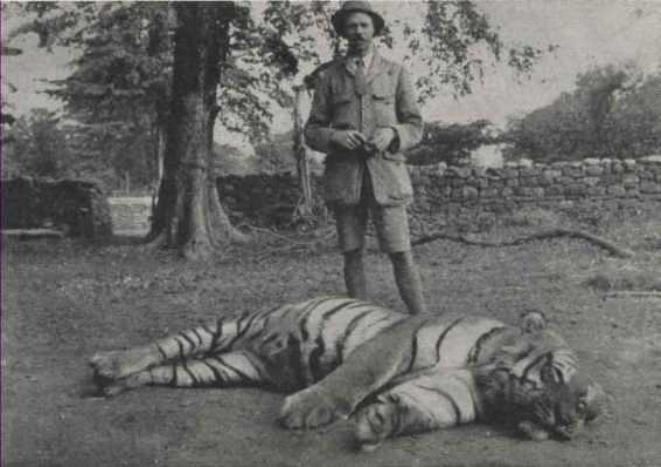Nationality British Indian | Name Jim Corbett | |
 | ||
Full Name James Edward (or Edward James) Corbett Occupation hunter, naturalist, writer | ||
Jim corbett wiki let s read
Edward James Corbett (25 July 1875 – 19 April 1955) was a British-Indian hunter and tracker-turned-conservationist, author and naturalist, who hunted a large number of man-eating tigers and leopards in India.
Contents
- Jim corbett wiki let s read
- Jim corbett s home in kaladhungi
- Early life
- Hunting man eating tigers and leopards
- Hunter turned conservationist
- Retiring in Kenya
- Personal life
- Hollywood movie
- Other adaptations
- Honours
- Books
- References
Corbett held the rank of colonel in the British Indian Army and was frequently called upon by the government of the United Provinces, now the Indian states of Uttar Pradesh and Uttarakhand, to kill man-eating tigers and leopards that were preying on people in the nearby villages of the Garhwal and Kumaon regions.
He authored Man-Eaters of Kumaon, Jungle Lore, and other books recounting his hunts and experiences, which enjoyed critical acclaim and commercial success. Later on in life, Corbett became an avid photographer and spoke out for the need to protect India's wildlife from extermination and played a key role in creating a national reserve for the endangered Bengal tiger, by using his influence to persuade the provincial government to establish what was called Hailey National Park. In 1957, the park was renamed Jim Corbett National Park in his honour.
Jim corbett s home in kaladhungi
Early life

Corbett was born of Irish ancestry in the town of Nainital in the Kumaon of the Himalaya (now in the Indian state of Uttarakhand). He grew up in a large family of sixteen children and was the eighth child of Christopher William Corbett and his wife Mary Jane (née Prussia) who had previously married Dr Charles James Doyle of Agra, who died at Etawah in 1857. His parents had moved to Nainital in 1862, after Christopher Corbett had quit military service and been appointed the town's postmaster. In winters the family used to move to the foothills, where they owned a cottage named 'Arundel' in Chhoti Haldwani or "Corbett's Village" - now known as Kaladhungi. Mary Jane was very influential in Nainital social life among Europeans and she became a kind of real estate agent for European settlers. Christopher William retired from the position of postmaster in 1878. He died a few weeks after a heart attack on 21 April 1881. Jim was then aged six and his eldest brother Tom took over as postmaster of Nainital. From a very early age Jim was fascinated by the forests and wildlife around his home in Kaladhungi. Through frequent excursions he learned to identify most animals and birds by their calls. Over time he became a good tracker and hunter. He studied at Oak Openings School, which merged with Philander Smith College in Nainital (later known as Halett War School, and now known as Birla Vidya Mandir, Nainital). Before he was nineteen he quit school and found employment with the Bengal and North Western Railway, initially working as a fuel inspector at Manakpur in the Punjab, and subsequently as a contractor for the trans-shipment of goods across the Ganges at Mokameh Ghat in Bihar.
Hunting man-eating tigers and leopards
During his life Corbett tracked and shot a number of leopards and tigers, though only about a dozen were actually well documented man-eaters. Corbett provided estimates of human casualties in his books, including Man-Eaters of Kumaon, The Man-Eating Leopard of Rudraprayag, and The Temple Tiger, and More Man-Eaters of Kumaon. Calculating the totals from these accounts, these big cats had killed more than 1,200 men, women and children, according to Corbett. There are some discrepancies in the official human death tolls that the British and Indian governments have on record and Corbett's estimates.
The first designated man-eating tiger he killed, the Champawat Tiger, was responsible for 436 documented deaths. Though most of his kills were tigers, Corbett successfully killed at least two man-eating leopards. The first was the Panar Leopard in 1910, which allegedly killed 400 people. The second was the man-eating Leopard of Rudraprayag in 1926, which terrorized the pilgrims on the holy Hindu shrines Kedarnath and Badrinath for more than eight years, claiming responsibility for more than 126 deaths.
Other notable man-eaters he killed were the Talla-Des man-eater, the Mohan man-eater, the Thak man-eater, the Muktesar man-eater and the Chowgarh tigress.
Analysis of carcasses, skulls and preserved remains show that most of the man-eaters were suffering from disease or wounds, such as porcupine quills embedded deep in the skin or gunshot wounds that had not healed, like that of the Muktesar Man-Eater. The Thak man-eating tigress, when skinned by Corbett, revealed two old gunshot wounds; one in her shoulder had become septic, and could have been the reason for the tigress's having turned man-eater, Corbett suggested. In the foreword of Man Eaters of Kumaon, Corbett writes:
The wound that has caused a particular tiger to take to man-eating might be the result of a carelessly fired shot and failure to follow up and recover the wounded animal, or be the result of the tiger having lost his temper while killing a porcupine
Corbett preferred to hunt alone and on foot when pursuing dangerous game. He often hunted with Robin, a small dog he wrote about in Man-Eaters of Kumaon.
Hunter turned conservationist
Corbett bought his first camera in the late 1920s and, inspired by his friend Frederick Walter Champion, started to record tigers on cine film. Although he had an intimate knowledge of the jungle, it was a demanding task to obtain good pictures, as the animals were exceedingly shy.
It is widely believed that Corbett did not kill a tiger without confirmation of its killing people. However, Corbett killed the unusually large and most widely sought after Bachelor of Powalgarh even though this tiger had never killed a human.
Corbett took to lecturing groups of schoolchildren about their natural heritage and the need to conserve forests and their wildlife. He promoted the foundation of the Association for the Preservation of Game in the United Provinces and the All-India Conference for the Preservation of Wildlife. Together with Champion he played a key role in establishing India's first national park in the Kumaon Hills, the Hailey National Park, initially named after Lord Malcolm Hailey. The park was renamed in Corbett's honour in 1957.
Corbett deeply empathized with the poor living in and around the Corbett village or Kaladhoongi in the United Province (now Uttrakhand). As a railway contractor he employed scores of Indians at Mokameh Ghat. While dedicating his book My India to "...my friends, the poor of India", he writes "It is of these people, who are admittedly poor, and who are often described as 'India's starving millions', among whom I have lived and whom I love, that I shall endeavor to tell in the pages of this book, which I humbly dedicate to my friends, the poor of India."
Retiring in Kenya
Jim Corbett resided in the Gurney House along with his sister Maggie Corbett. They sold the house to Mrs. Kalavati Varma, before leaving for Kenya in November 1947. The house has been transformed into a museum and is known as the Jim Corbett Museum.
After 1947, Corbett and his sister Maggie retired to Nyeri, Kenya, where he continued to write and sound the alarm about declining numbers of wild cats and other wildlife. Corbett was at the Tree Tops, a hut built on the branches of a giant ficus tree, when Princess Elizabeth stayed there on 5–6 February 1952, at the time of the death of her father, King George VI. Corbett wrote in the hotel's visitors' register:
For the first time in the history of the world, a young girl climbed into a tree one day a Princess, and after having what she described as her most thrilling experience, she climbed down from the tree the next day a Queen—God bless her.
Corbett died of a heart attack a few days after he finished his sixth book, Tree Tops, and was buried at St. Peter's Anglican Church in Nyeri. His memories were kept intact in the form of the meeting place Moti House, which Corbett had built for his friend Moti Singh, and the Corbett Wall, a long wall (approximately 4.5 miles (7.2 km)) built around the village to protect crops from wild animals.
Man-eaters of Kumaon was a great success in India, the United Kingdom and the United States, the first edition of the American Book-of-the-Month Club being 250,000 copies. It was later translated into 27 languages. Corbett's fourth book, Jungle Lore, is considered his autobiography.
The Jim Corbett National Park in Uttarakhand, India was renamed in his honour in 1957. He had played a key role in establishing this protected area in the 1930s.
In 1968, one of the five remaining subspecies of tigers was named after him: Panthera tigris corbetti, the Indochinese tiger, also called Corbett's tiger.
In 1994 and 2002, the long-neglected graves of Corbett and his sister (both in Kenya) were repaired and restored by Jerry A. Jaleel, founder and director of the Jim Corbett Foundation.
Personal life
Corbett remained unmarried in life and many of the women he loved were rejected by his mother and later his sister Maggie. For many years he had an affair with Jean wife of his friend Sir William Ibbotson.
Hollywood movie
In 1948, in the wake of Man-Eaters of Kumaon's success, a Hollywood film, Man-Eater of Kumaon, was made, directed by Byron Haskin and starring Sabu, Wendell Corey and Joe Page. The film did not follow any of Corbett's stories; a new story was invented. The film was a flop, although some interesting footage of the tiger was filmed. Corbett is known to have said that "the best actor was the tiger".
Other adaptations
In 1986, the BBC produced a docudrama titled Man-Eaters of India with Frederick Treves in the role of Jim Corbett. An IMAX movie India: Kingdom of the Tiger, based on Corbett's books, was made in 2002 starring Christopher Heyerdahl as Corbett. A TV movie based on The Man-Eating Leopard of Rudraprayag starring Jason Flemyng was made in 2005.
Honours
Corbett received the Kaisar-i-Hind Medal in the 1928 New Year Honours. He was made a Companion of the Order of the Indian Empire in the King's 1946 Birthday Honours.
